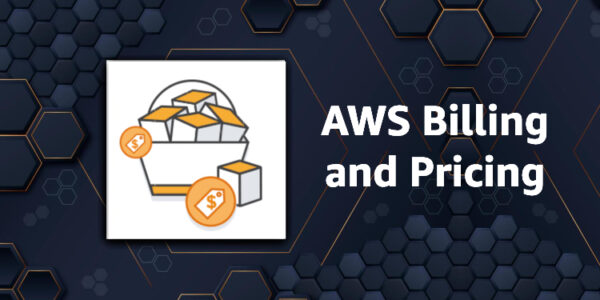Day 21 - AWS Pricing
 Arnold Bernard
Arnold Bernard
Amazon Web Services (AWS) offers a vast array of cloud computing services, from storage and computing power to machine learning and databases. While the breadth and flexibility of AWS services are significant advantages, understanding AWS pricing can be daunting. This blog post provides a detailed overview of AWS pricing, key pricing models, cost management tools, and strategies to optimize your cloud expenditures.
Introduction to AWS Pricing
AWS employs a pay-as-you-go pricing model, meaning you pay only for the resources you use. This model can be cost-effective and flexible but requires a clear understanding of how services are billed. AWS pricing can vary based on service type, resource utilization, data transfer, and other factors.
Key Pricing Models in AWS
On-Demand Pricing
Description: With on-demand pricing, you pay for compute or storage resources by the hour or second (depending on the service). This model is ideal for applications with unpredictable workloads or short-term projects.
Use Cases: Development and testing environments, small-scale applications, or workloads with fluctuating resource demands.
Reserved Instances (RI)
Description: Reserved Instances offer a significant discount compared to on-demand pricing in exchange for committing to use a specific instance type in a specific region for a one-year or three-year term. There are three payment options: All Upfront, Partial Upfront, and No Upfront.
Use Cases: Long-term applications with predictable workloads, such as enterprise applications, databases, or large-scale web services.
Savings Plans
Description: AWS Savings Plans provide a flexible pricing model that offers lower prices compared to on-demand pricing, in exchange for a commitment to use a specific amount of resources over a one- or three-year period. They come in two types: Compute Savings Plans and EC2 Instance Savings Plans.
Use Cases: Users with variable compute usage patterns who want flexibility in their AWS services.
Spot Instances
Description: Spot Instances allow you to bid for unused EC2 capacity at reduced prices. Spot pricing can be up to 90% cheaper than on-demand prices, but instances can be terminated by AWS with little notice if the capacity is needed elsewhere.
Use Cases: Batch processing, data analysis, or fault-tolerant applications where interruptions are acceptable.
Dedicated Hosts
Description: Dedicated Hosts provide physical servers dedicated to your use. You pay for the entire host regardless of how many instances you run on it. This model is useful for applications with specific licensing requirements.
Use Cases: Applications with licensing needs that require physical isolation or compliance requirements.
Free Tier
Description: AWS Free Tier offers limited access to AWS services at no cost for a limited time. It includes a 12-month free tier for new customers and a perpetual free tier for certain services.
Use Cases: Testing and learning about AWS services, small-scale applications, or proof-of-concept projects.
Key Factors Affecting AWS Costs
Understanding the factors that affect AWS pricing can help you manage and optimize your cloud expenses:
Resource Utilization
Compute: Charges are based on instance type, size, and usage duration. The more powerful the instance, the higher the cost.
Storage: Costs vary depending on the storage service (e.g., S3, EBS) and the amount of data stored and transferred.
Data Transfer
Inbound Data: Generally free of charge.
Outbound Data: Charged based on the amount of data transferred out of AWS to the internet or other AWS regions.
API Calls
- Description: Some AWS services charge based on the number of API calls made. For example, AWS Lambda and S3 charge based on the number of requests.
Additional Features
- Monitoring and Logging: Services like AWS CloudWatch and AWS CloudTrail can incur additional costs based on the volume of data monitored and logged.
Regional Pricing
- Description: AWS pricing can vary by region due to factors like local data center costs and infrastructure availability. Choosing the right region can impact costs.
Tools and Strategies for Cost Management
Effective cost management is crucial for optimizing your AWS expenditure. Here are some tools and strategies to help:
1. AWS Cost Explorer
AWS Cost Explorer provides a detailed view of your AWS spending. It offers insights into usage patterns and costs and helps you analyze and forecast your expenses.
Features: Customizable reports, cost allocation tags, and budget alerts.
Usage: Identify cost trends, track spending by service, and forecast future costs.
2. AWS Budgets
AWS Budgets allows you to set custom cost and usage budgets and receive alerts when your spending exceeds predefined thresholds.
Features: Budget tracking, alert notifications, and detailed cost breakdowns.
Usage: Set up monthly or quarterly budgets for different projects or departments and monitor adherence to financial goals.
3. AWS Cost and Usage Report
The AWS Cost and Usage Report provides detailed billing information about your AWS usage and costs. It offers a comprehensive view of your cloud spending and helps you track down unexpected charges.
Features: Detailed billing data, usage breakdowns, and historical cost data.
Usage: Analyze cost drivers, reconcile invoices, and track detailed usage information.
4. AWS Trusted Advisor
AWS Trusted Advisor offers recommendations for cost optimization, performance improvement, and security best practices. It evaluates your AWS environment against best practices and provides actionable advice.
Features: Cost optimization, performance, security, and fault tolerance recommendations.
Usage: Review and implement recommendations to reduce costs and improve efficiency.
5. AWS Cost Anomaly Detection
AWS Cost Anomaly Detection helps you identify unusual spending patterns and anomalies in your AWS usage. It uses machine learning to detect deviations from your typical spending patterns.
Features: Anomaly detection, cost alerts, and trend analysis.
Usage: Monitor for unexpected cost increases and investigate anomalies to prevent overspending.
6. Tagging and Cost Allocation
Tagging your AWS resources with meaningful labels (tags) allows you to categorize and track costs by project, department, or environment. AWS Cost Allocation Tags enable you to allocate costs and usage to specific business units or projects.
Features: Cost allocation reports, resource organization, and detailed billing.
Usage: Implement a tagging strategy, assign tags to resources, and analyze costs by tag to understand spending patterns.
7. Right-Sizing and Scaling
Regularly review your resource usage and adjust instance types or sizes based on your actual needs. AWS offers tools like Compute Optimizer to recommend the optimal instance types based on your usage patterns.
Features: Right-sizing recommendations, instance type analysis, and utilization reports.
Usage: Optimize instance sizes, reduce underutilized resources, and scale resources based on demand.
Best Practices for AWS Cost Optimization
- Regularly Review Billing Reports
Regularly review your AWS billing reports and cost data to identify trends, anomalies, and areas for improvement. Set up automated cost reports to track spending and stay informed.
- Use Cost-Effective Services
Choose cost-effective services based on your use case. For example, consider using AWS Lambda for event-driven applications or S3 for low-cost storage solutions.
- Leverage Reserved Instances and Savings Plans
For predictable workloads, purchase Reserved Instances or Savings Plans to benefit from significant cost savings compared to on-demand pricing.
- Optimize Data Transfer Costs
Minimize data transfer costs by using services like Amazon CloudFront for content delivery or AWS Direct Connect for private network connections.
- Implement Auto-Scaling
Use AWS Auto Scaling to automatically adjust the number of instances or resources based on demand. This helps avoid over-provisioning and reduces costs.
- Take Advantage of the Free Tier
Utilize AWS Free Tier to experiment with services and run small-scale applications without incurring costs. Ensure you stay within the limits of the free tier to avoid unexpected charges.
- Monitor and Optimize Storage
Regularly review your storage usage and delete unused data or snapshots. Use lifecycle policies to transition data to lower-cost storage classes like S3 Glacier for archival storage.
- Review and Adjust Security Groups
Ensure your security group rules are optimized to prevent unnecessary data transfer and associated costs. Remove redundant or overly permissive rules that may lead to increased traffic.
Conclusion
Navigating AWS pricing can be complex, but understanding the various pricing models and leveraging cost management tools can help you optimize your cloud expenditures. By implementing best practices and regularly reviewing your usage and costs, you can manage your AWS expenses effectively and ensure that you’re getting the most value from your cloud investment.
AWS provides a flexible and powerful cloud platform, and with the right strategies in place, you can control costs while taking full advantage of the services it offers. Whether you’re running a small project or managing a large-scale enterprise environment, mastering AWS pricing and cost management is key to achieving financial efficiency in the cloud.
Subscribe to my newsletter
Read articles from Arnold Bernard directly inside your inbox. Subscribe to the newsletter, and don't miss out.
Written by
